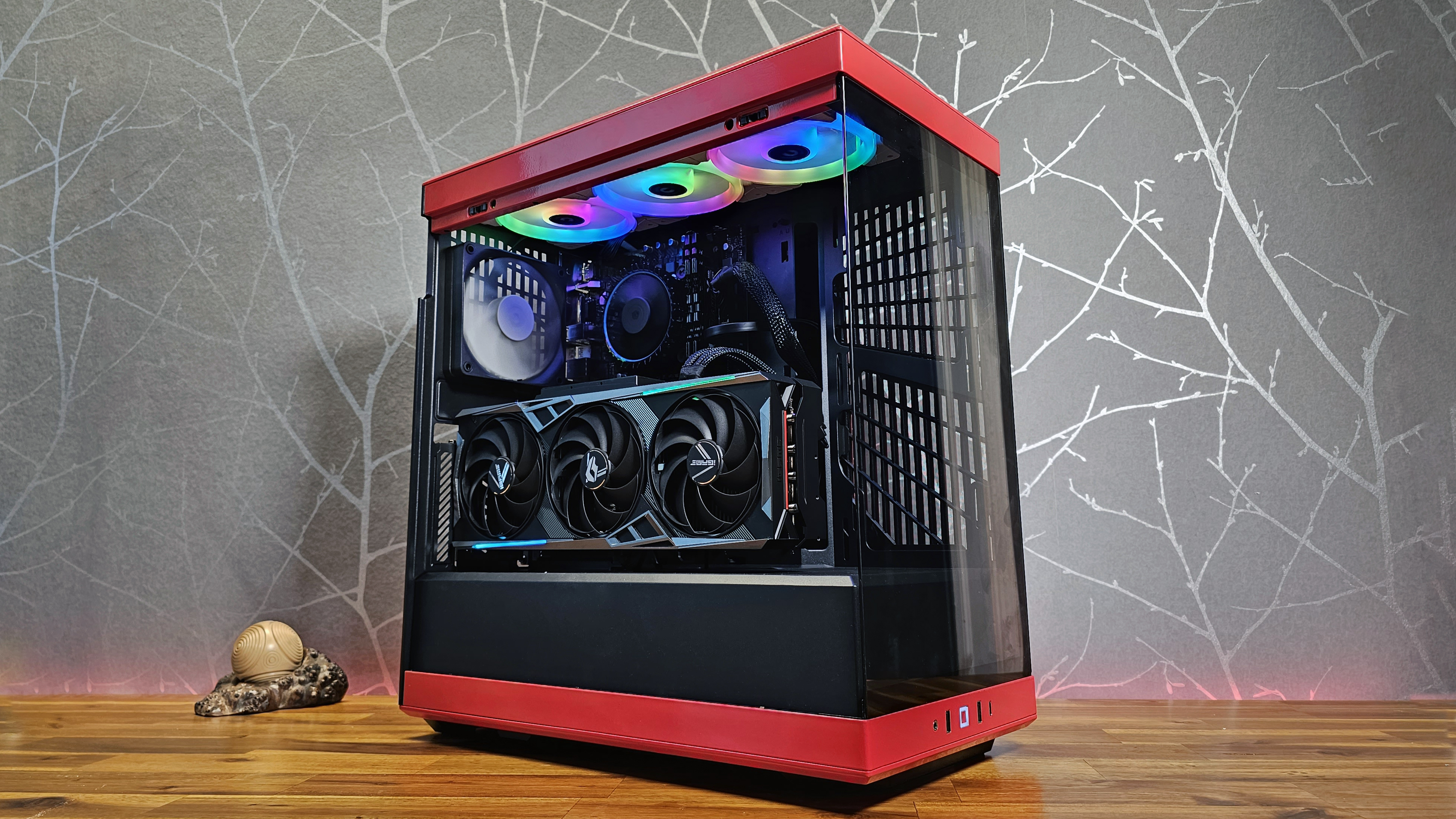
Hyte’s glass-happy Y60 case has been a surprise hit with those who want to show off their pretty PC components, even if we dinged it for the fact that it’s decidedly not great when it comes to temperatures. Clearly, the company is ready for a follow-up. Earlier this year, Hyte announced a more affordable Y40 model, which ditches one of the glass panels (you still get one on the front and the side) for a smaller footprint and a more affordable price of $150.
Hyte sent us the flashy red model (it’s also available in black or white), and after building a system in the Y40, I came away largely impressed. There is a shocking amount of detail here, though some of it seems aimed more at form than functionality. This case isn’t going to win over any new performance-focused fans, though. The concerns about airflow and temperatures remain, given that the front and side are solid sheets of glass.
Despite its more compact size compared to the Y60 (the Y40 is nearly two inches narrower and about an inch shorter than the Y60), I had no problems fitting an RTX 4090 in the case, and the card sits vertically front and center, thanks to the included PCIe 4.0 riser cable – which is a nice included feature, given the case’s price. PCIe 4.0 riser cables typically sell for around $40 or more on their own. But if you’re going to add serious high-end hardware, you’ll definitely want more than the two 120mm fans that the company includes with the case. And there is no RGB lighting included either, which is somewhat odd given that this case is all about showing off your components.
Specs of the Hyte Y40
Hyte Y50 Motherboard and GPU Support
Just like the Y60, Hyte’s Y40 supports ATX and smaller motherboards, and there’s room for the biggest of big GPUs. The case supports cards four slots thick and your card would have to be more than 16 inches long before the end of it would start bumping up against the glass at the front of the case.
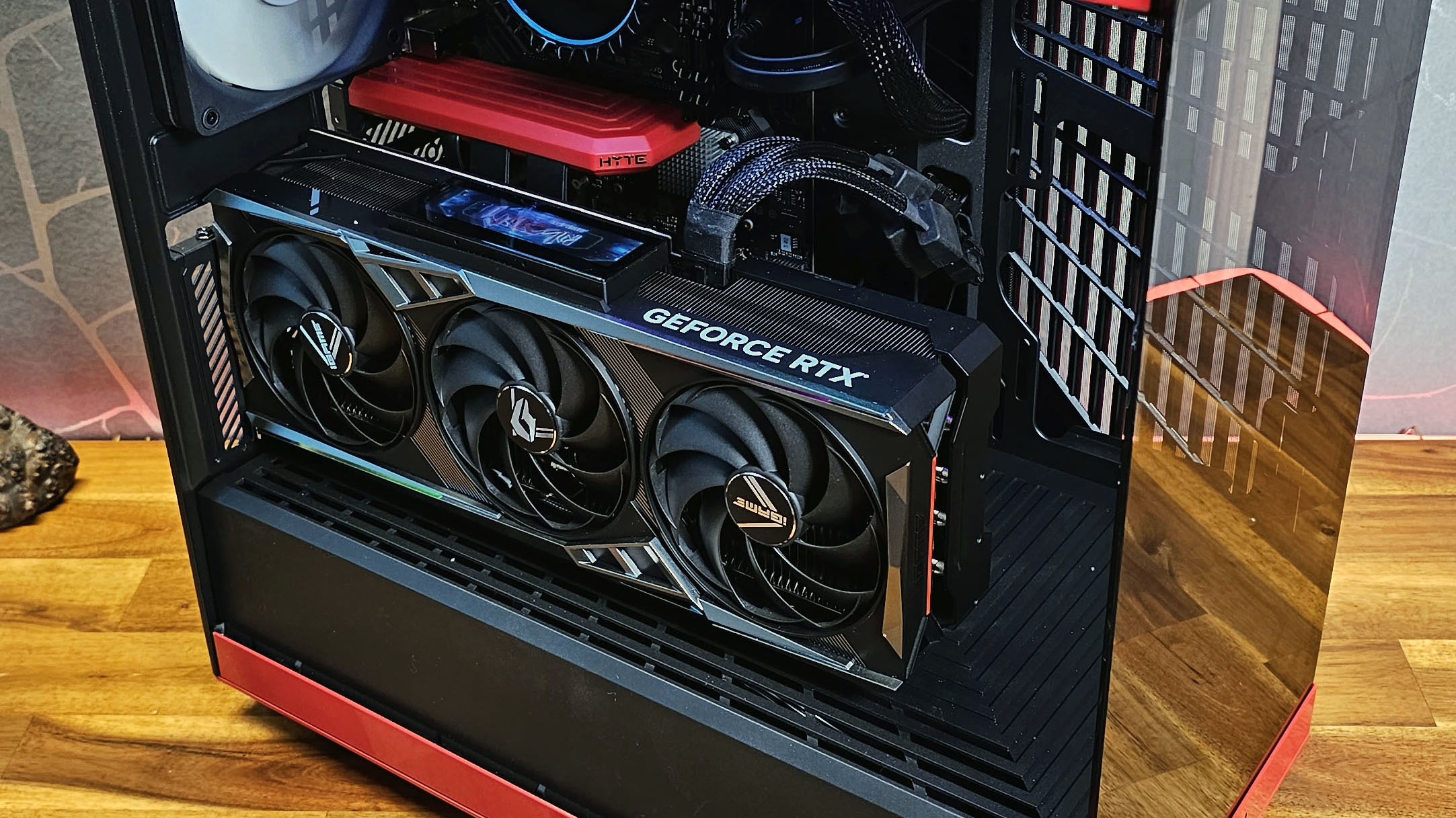
I installed the Colorful RTX 4090 Vulcan OC in the bottom of the case (via the pre-installed riser cable), and the card was a much easier fit here than the precise angling I had to do to get the same GPU into the Fractal North case.
Hyte Y40 Panels, Storage and Expansion
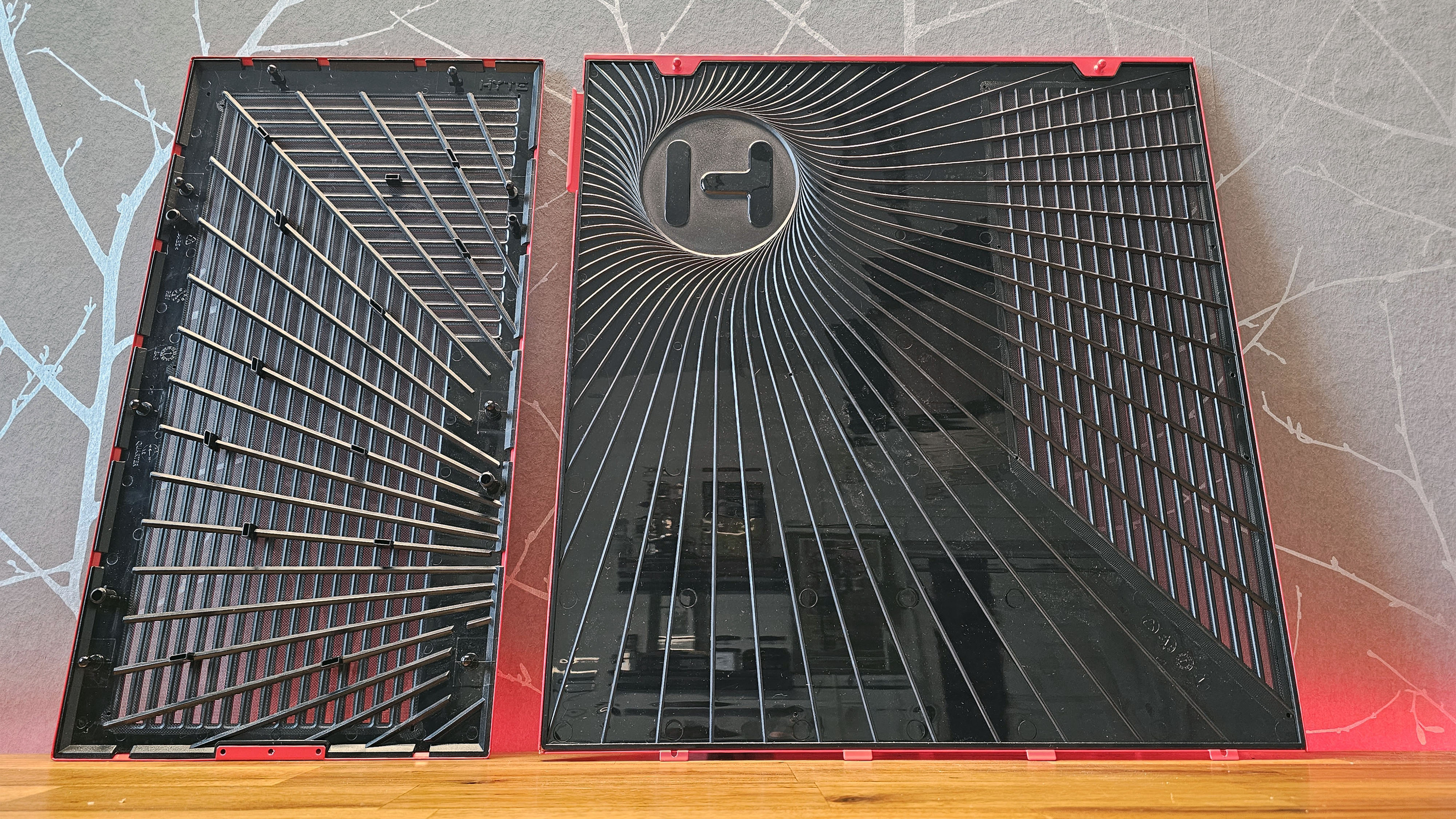
The pop-off top and rear side panels are lined with black plastic, which incorporates the dust filters into bold patterns and includes some Hyte branding. This is both attractive and a little odd, given that you’re only really going to see this stuff when building or upgrading your system. And you’ll have to pop these panels off to clean the dust filters. The dust filters on the bottom of the case (there are two) are removable, but they aren’t the easiest to pull off and reinstall, because they are made of flexible plastic and need to be wedged into metal channels that are part of the bottom of the chassis. At least the dust filters are plentiful here.
Storage is going to be a sticking point for some. Sure, M.2 slots are increasingly plentiful. But for those who still want to use SATA drives, there is a removable mounting plate behind the motherboard where you can attach either two 2.5-inch or one 3.5-inch drive. And that’s technically all the case supports. This seems a bit odd, given that there’s clearly room under the vented PSU shroud that runs along the bottom of the case. But as this is both the main air intake area and directly below where the graphics card sits, I could see drives here being a further hindrance to airflow. This case just isn’t built for lots of storage – unless all that storage installs directly onto your motherboard via M.2 connectors. Given the size of this case, I’d like to see at least a couple more mounts for 2.5-inch drives.
Other expansion options are less restrictive, although there are complications. Aside from the four vertically mounted expansion slots for your GPU, there are seven horizontal slots on the back of the case. But one is occupied by the mounting of the card-like PCIe 4.0 riser cable. And all of these are half-height slots since the vertically mounted GPU sits in front of them.
Granted, many people (or specifically many gaming-focused builders) only use expansion slots for the graphics card. And if you want to plug in something else, like a Wi-Fi 6E card or something to add more USB ports, there are plenty of half-height options available. Just know going in that beyond the GPU, any expansion cards you install will have to be low profile.
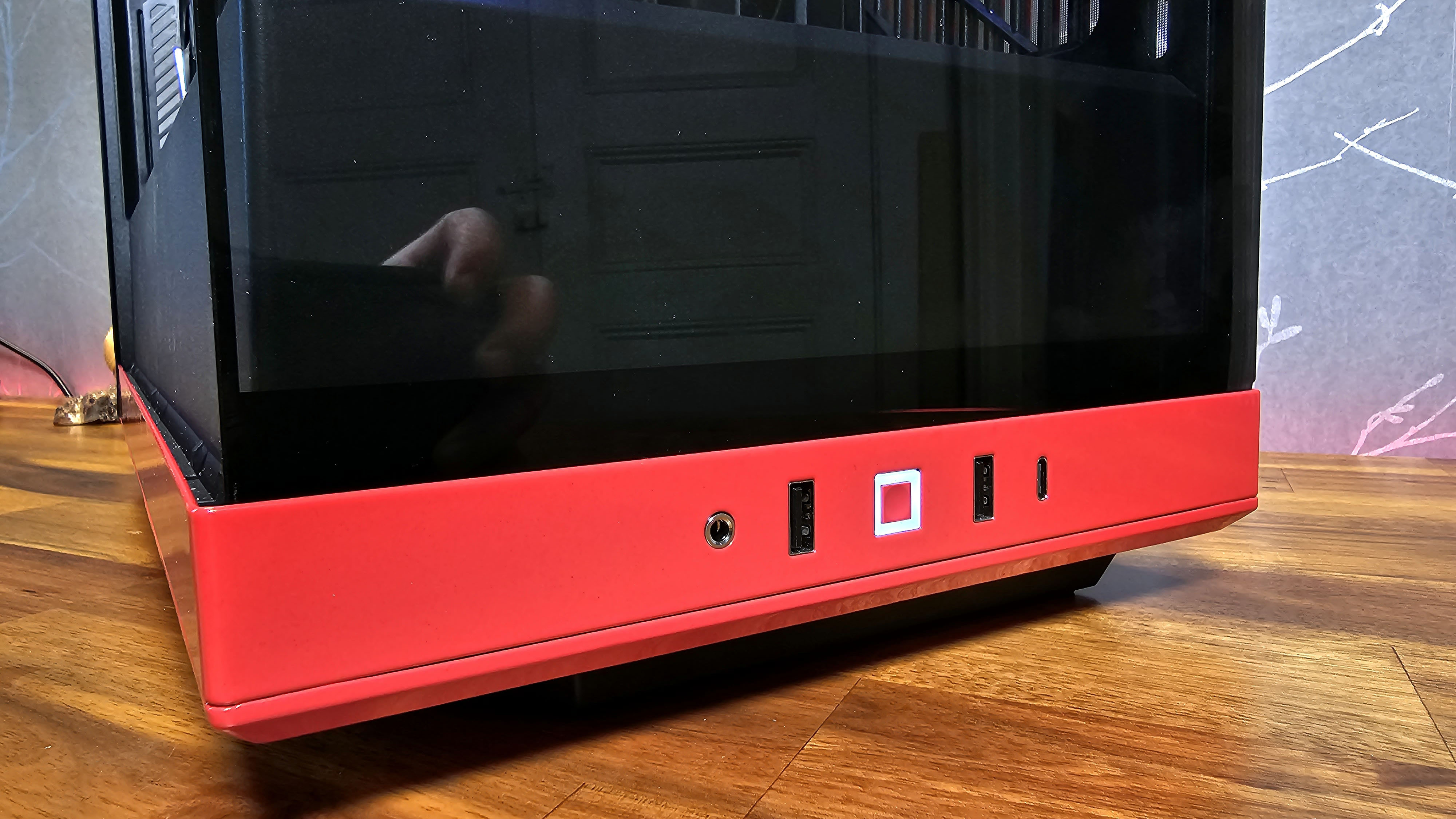
The front ports are at least pretty standard. You get a pair of USB 3.0 Type-A ports (flanked by a nice clickly, LED-ringed power button), a headphone /mic combo jack and a USB-C port.
Let’s Talk About Fans
Cooling performance is never going to be ideal in a case with a glass front and a glass side. So those who prioritize airflow should look to something else on our best PC cases list. Those looking to install mid-range hardware should be more or less fine with the pair of 120mm fans that Hyte includes with this case – at least as far as temperatures go. Just don’t put the case on thick carpeting, which would choke intake from the bottom of the case.
But those looking to install a high-end graphics card and / or one of the best CPUs for gaming should definitely install more fans here. The 120 mm fan at the bottom isn’t likely to keep your powerful heat-generating components happily supplied with cool air. And neither the intake nor the exhaust fan sport any kind of lighting – the case lacks lighting altogether, in fact, so you’ll have to bring your own.
And if you are building in a case like this specifically designed to show off your graphics card and other components, you probably will want to add lighting. I’d do so via RGB fans, since you’ll be adding some attractive lighting while also improving airflow in the process.
Adding Thermaltake’s Magnetic SWAFAN EX12 RGB
Since the motherboard I used to test the Hyte case had no RGB and the GPU didn’t have much either, I installed three of Thermaltake’s premium (and pricey at $110-$130 per three-pack) SWAFAN EX12 RGB fans.
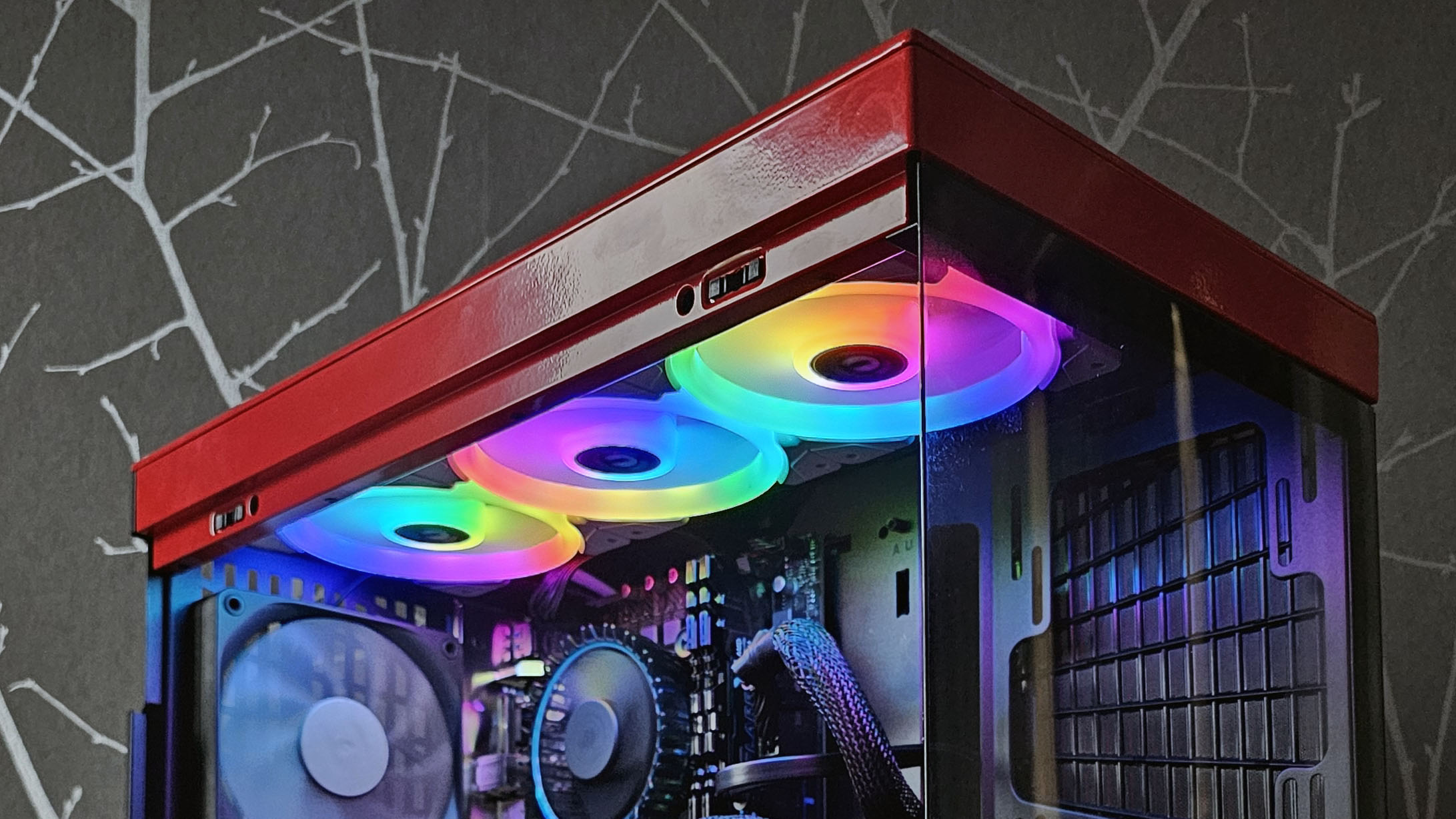
These are interesting and surprisingly easy to install, because they’re magnetic, and connect to each other via pins rather than fan cables. So installing three of these fans in the top of the Hyte Y40 was as easy as snapping the three together like magnetic legos, popping them onto the top of the case where they were partially held in place via the magnets while I screwed them down, then I had to route just one fan cable behind the motherboard and back to the nearest convenient fan header. My one complaint was the magnetically attached cable connector, which had a tendency to snap on in a slightly wrong alignment. This caused me to have to fiddle with the fans a bit when they didn’t power on at first after I’d installed them. A nudge of the cable brought everything to life.
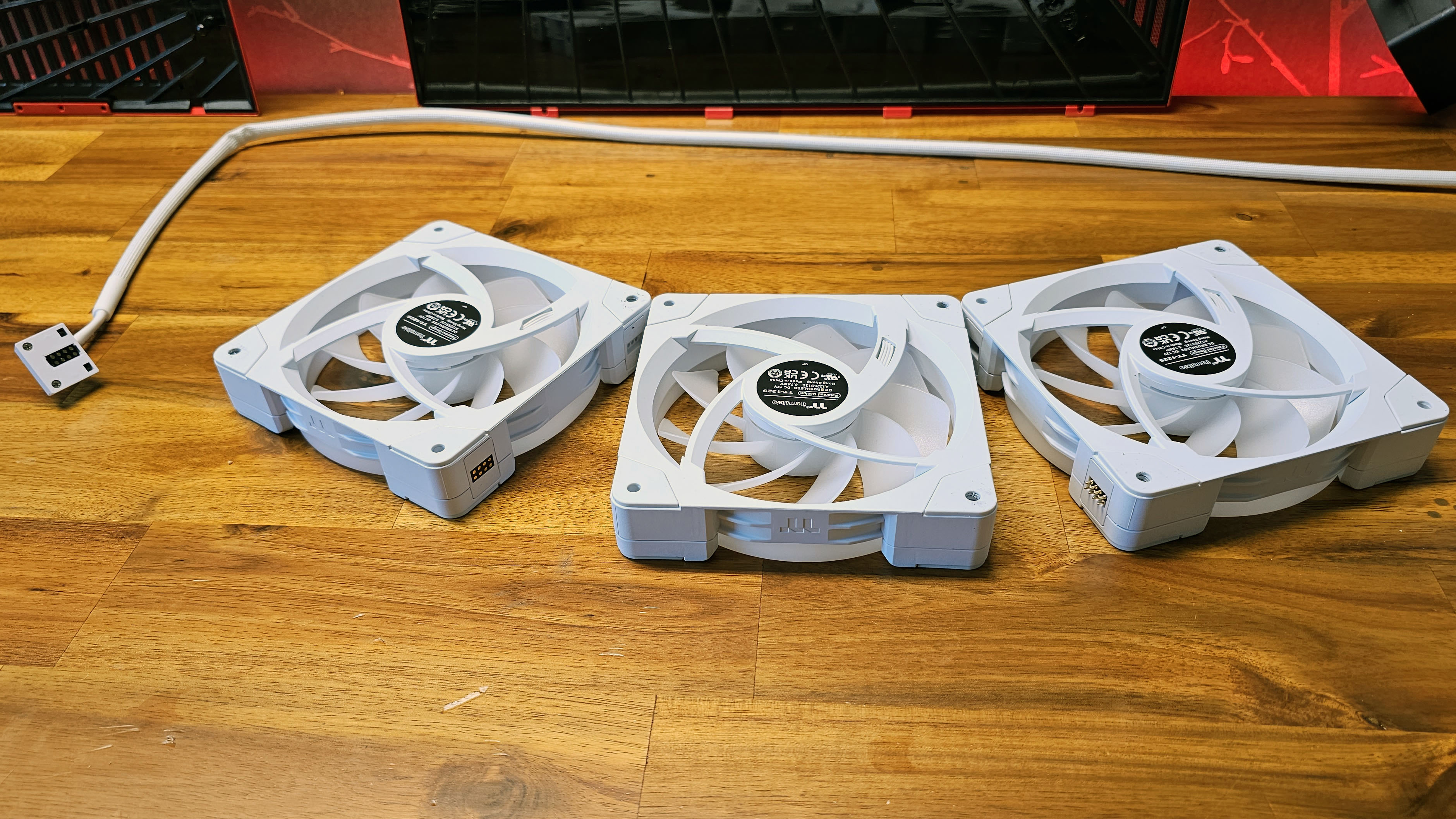
These fans also ship with two sets of blades, which can be swapped out to change the direction of the airflow without flipping the fans. Even if you’re more than capable of telling which way to orient your fans when installing them, this is a nice feature in some instances, because you’ll never have to orient the “rear” side of the fan in a way that you’ll see it.
I mounted the three fans at the top of this case, purely for aesthetic reasons. But if I were going to add more fans to the Y40 specifically for better airflow, I’d probably prioritize mounting a bigger, better fan at the bottom for intake. But those fans wouldn’t need to be RGB, since they’d be hidden below the PSU shroud.
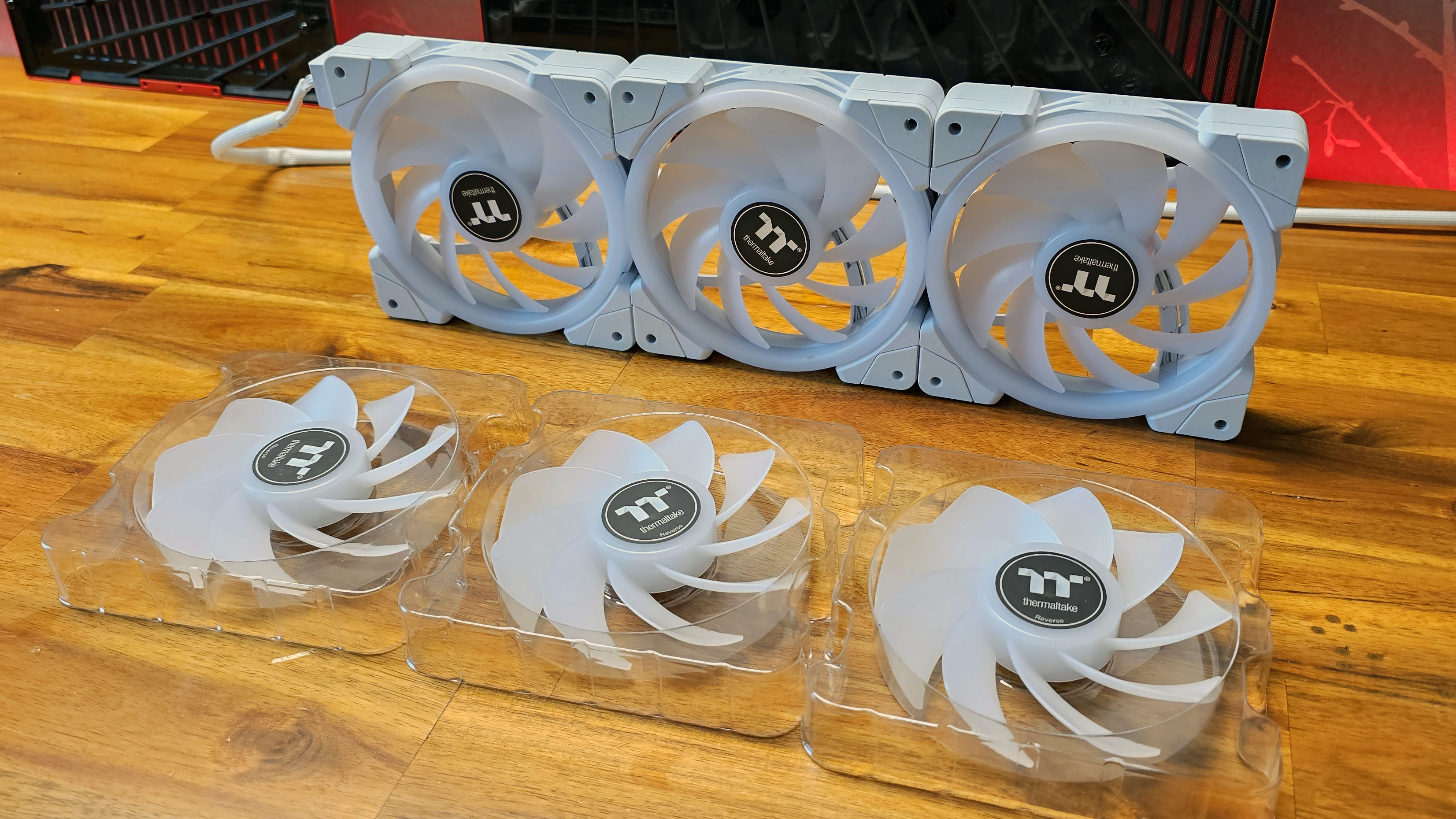
Thermaltake’s SWAFAN EX12 RGB fans are attractive and unique, but they’re also quite expensive. In fact, at their current $128 price on Amazon (they are also $20 less elsewhere), a three-pack costs almost as much as the $149 Hyte case.
Conclusion
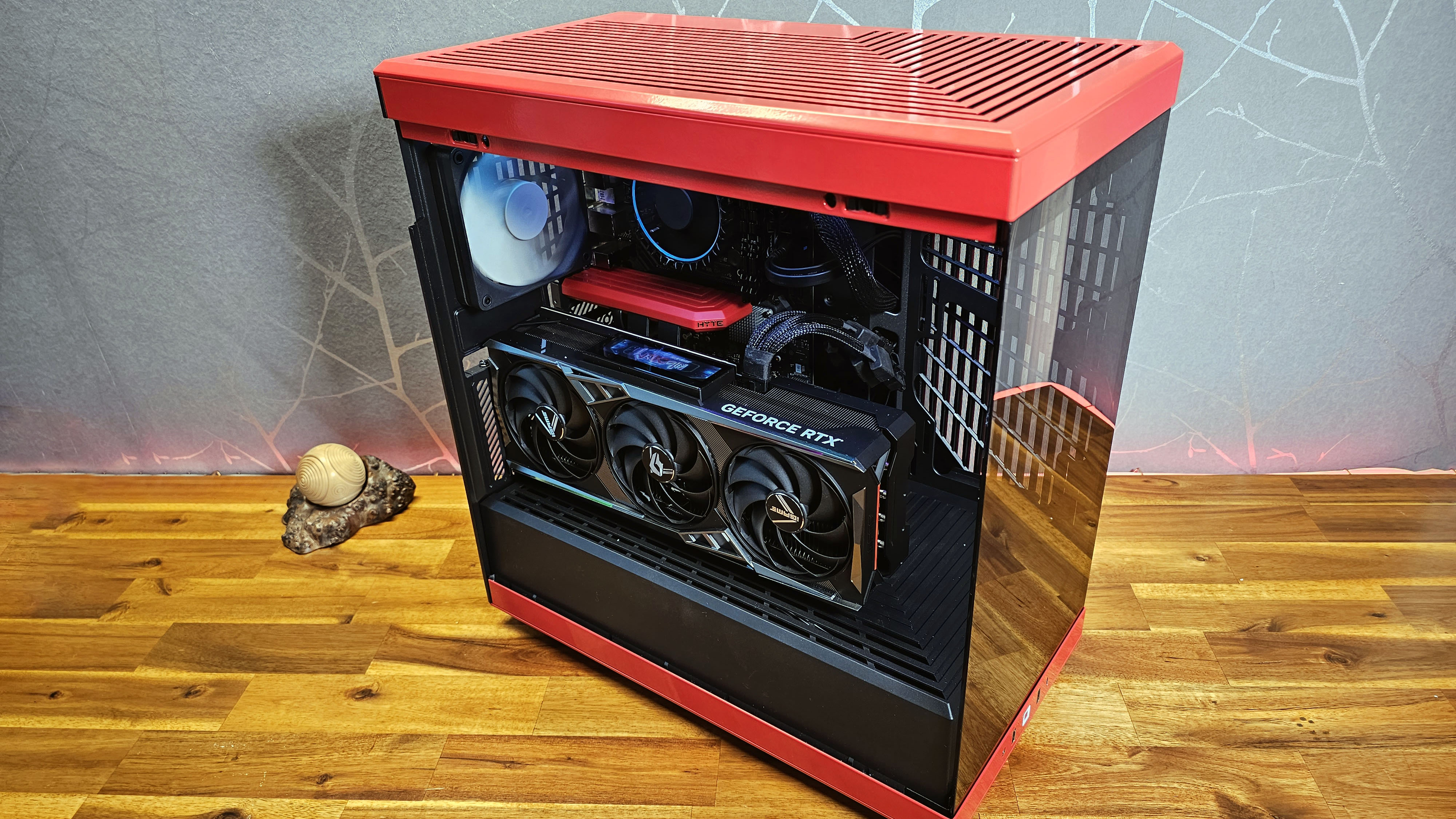
If you liked the looks of the Y60, but felt it was a little too bulky and expensive, the Y40 is easy to recommend. It delivers most of the visual wow factor for just $150, which isn’t a lot given a PCIe 4.0 riser cable is included. But if you shied away from the Y60 due to the airflow limitations that come with wrapping your powerful components in glass, the Y40 isn’t going to change your mind – even if there is still enough cooling here that mainstream gamers shouldn’t worry that their system is going to overheat.
If you do want to install high-end components in the Y40, I’d suggest adding a good non-RGB 140mm fan in the bottom of the case (perhaps Noctua’s NF-P14s, which is $17) for the best possible intake, then consider adding some RGB fans (and / or a radiator) up top to aid in exhaust, which will also some lighting to the interior and highlight the vertical GPU.
You can also mount a pair of 120 or 240 mm fans (or a radiator) on the side, in front of the motherboard. The case supports seven total fans, but given the otherwise constrained airflow, I’d love to see more than one fan supported in the bottom for intake. It looks like there’s nearly room for two spinners down there, and a case designed around two glass panels and no front intake could certainly use all the cool air it can get.
MORE: Best PC Cases 2022
MORE: Best Mini-ITX Cases 2022







